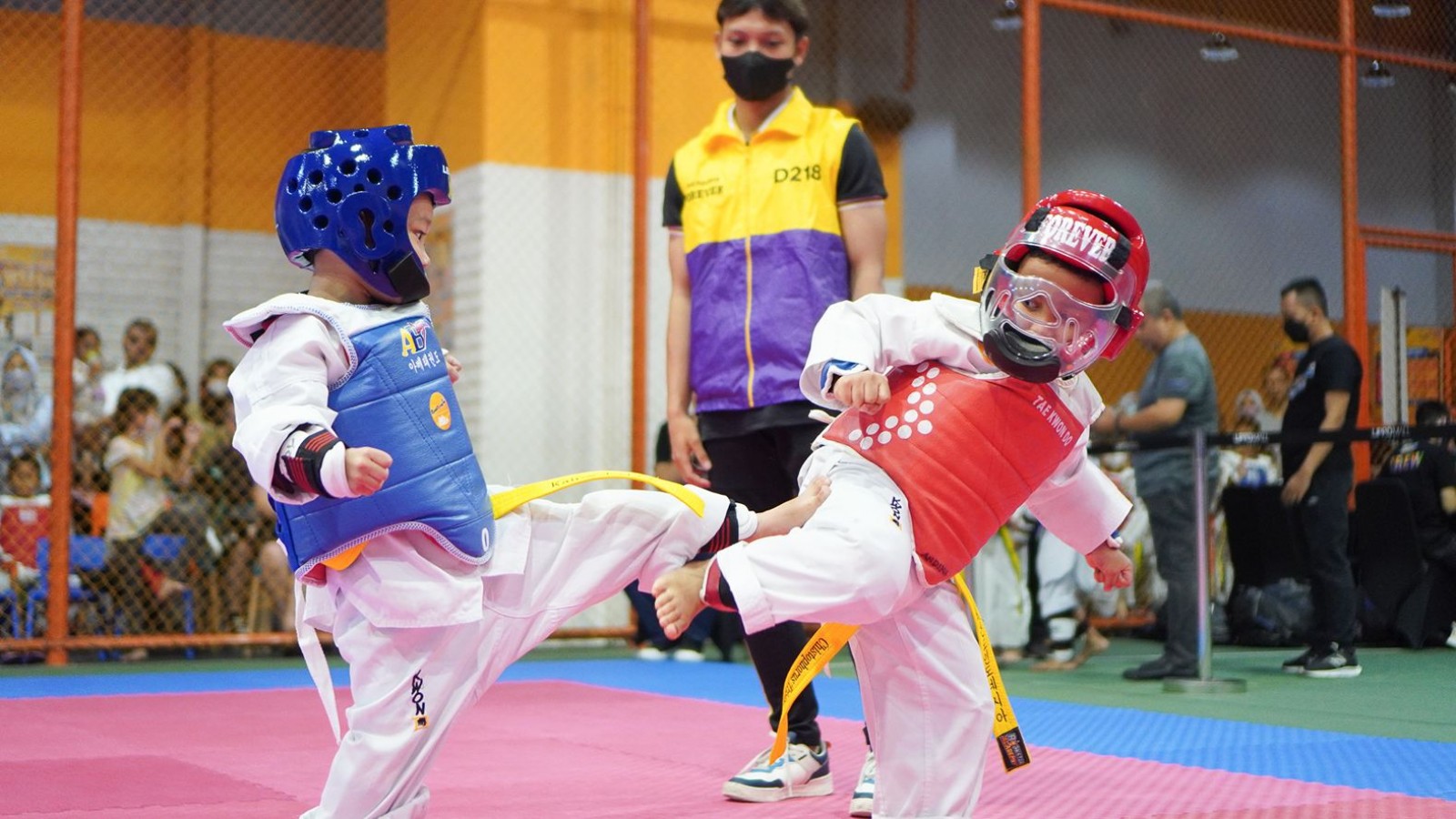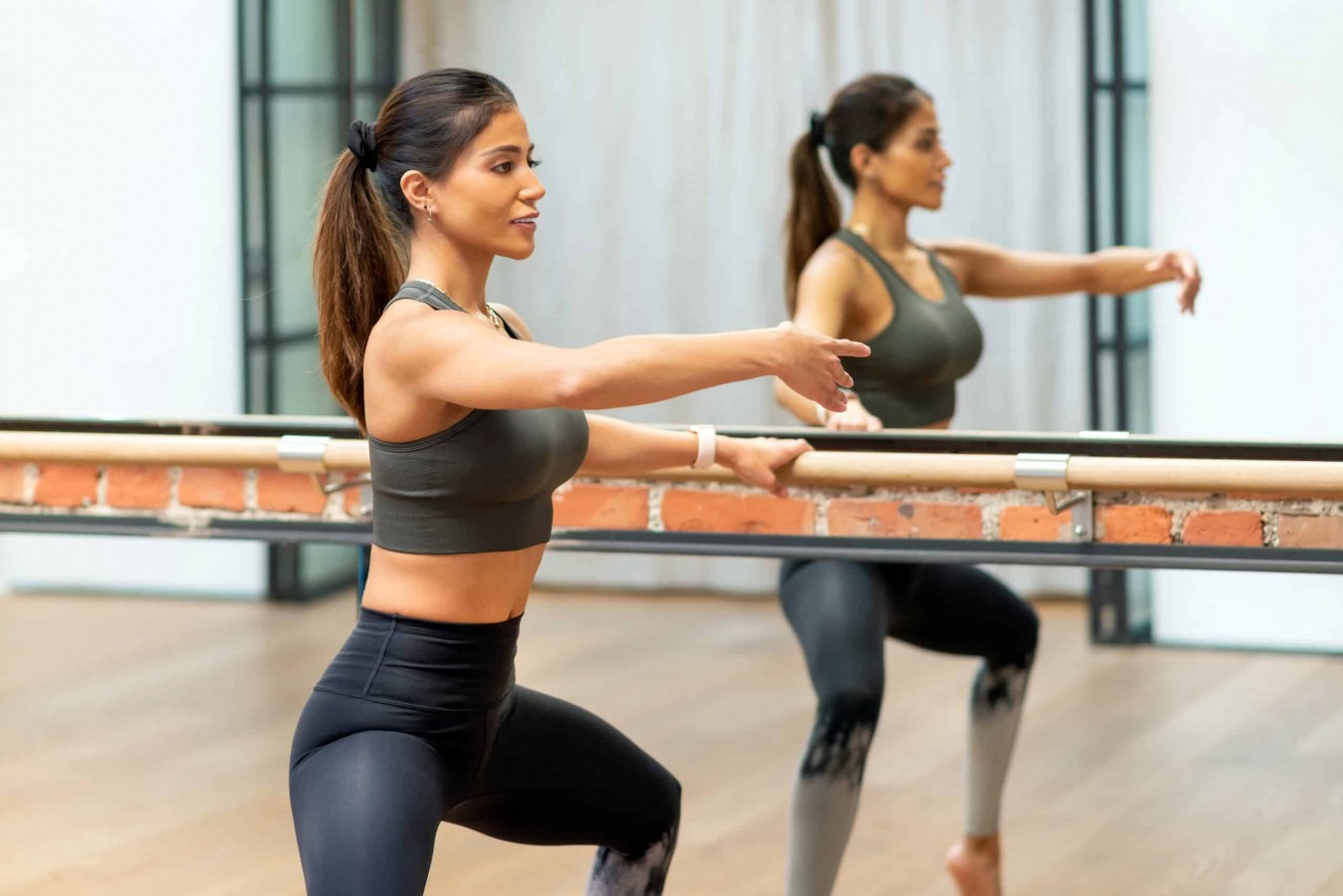Kyorugi Unveiled: The Thrill of Taekwondo Sparring

Kyorugi is one of the facets of taekwondo. It is also recognized as sparring in Taekwondo. Not only that, kyorugi represents the culmination of years of disciplined training, where practitioners showcase their mastery of precise kicks, strategic techniques, and unwavering determination on the competition mat.
As participants don protective gear and step into the ring, Kyorugi transcends mere physical combat, becoming a stage where skill, athleticism, and mental agility converge. This article delves into the intricacies of Kyorugi, exploring its definition, the rules that govern competitions, and the significance of weight categories in ensuring fair and competitive bouts.
What is Kyorugi?
Kyorugi, simply put, is Taekwondo sparring. It's the dynamic combat sport aspect of Taekwondo where two competitors engage in a controlled bout to score points using precise kicks and punches.
The objective is not a mere physical contact, but it involves certain strategy, timing, and the application of techniques.
The Essence of Kyorugi Competitions
In a Kyorugi competition, athletes wear protective gear including helmets, chest guards, forearm guards, shin guards, and groin protectors (mandatory for males). The match takes place on a specially padded mat within a defined ring, ensuring safety while allowing for the full expression of skill and athleticism.
Competitors score points by executing precise kicks and punches on designated scoring areas of their opponent's body, typically the torso or head. These points are awarded based on the effectiveness and accuracy of the technique, as determined by qualified referees who oversee the match to uphold fairness and safety standards.
How Does The Taekwondo Match Start and End?
Before the action in Taekwondo begins, both competitors and officials engage in a formal bow, a gesture that signifies mutual respect and readiness to engage in combat.
This bowing ritual is deeply ingrained in Taekwondo's tradition and serves as a symbolic gesture of sportsmanship and martial discipline.
Once the competitors are in position and the officials have ensured all safety protocols are in place, the match starts with a formal command from the referee. This command typically includes words like "Shijak!" (start) or "Gyeorugi sijak!" (start sparring), signaling the beginning of the timed rounds.
Taekwondo matches are typically divided into rounds, each lasting a specific duration depending on the level and category of competition. For junior competitors, rounds are often two minutes long, while senior matches extend to three minutes per round.
During these rounds, competitors engage in controlled combat, aiming to score points by landing valid strikes on their opponent's scoring areas, which are typically the torso and head.
Throughout the match, referees oversee the action from within the competition area, ensuring that the rules are upheld and that safety remains paramount. They are responsible for awarding points for clean and effective techniques while enforcing penalties for infractions such as excessive contact or illegal maneuvers.
As the rounds progress, competitors strategize, adapt, and showcase their skills, aiming to outscore their opponent or achieve victory by other means, such as accumulating a significant lead or scoring a decisive knockout (though knockouts are rare in regulated Taekwondo competitions due to safety precautions).
At the conclusion of the final round, another formal bow marks the end of the match. Competitors acknowledge each other and the referees once more, demonstrating respect for their opponent's efforts and the outcome of the match.
The referee then gathers the judges' scores to determine the winner based on the cumulative points scored throughout the rounds. In cases where the scores are tied, additional rounds or specific tie-breaking criteria may be implemented, depending on the competition rules and regulations in place.
Weight Categories in Kyorugi
Weight divisions in Kyorugi competitions can vary slightly depending on the organizing body, such as the World Taekwondo Federation (WTF) or the International Taekwon-Do Federation (ITF). However, they generally adhere to a set of standard weight ranges, which may include:
- Featherweight: Typically up to 58 kilograms (under 128 pounds).
- Lightweight: Often between 58 to 68 kilograms (128 to 150 pounds).
- Middleweight: Usually between 68 to 80 kilograms (150 to 176 pounds).
- Heavyweight: Above 80 kilograms (176 pounds) and sometimes divided further into different categories based on higher weight thresholds.
These divisions ensure that competitors are closely matched in terms of physical attributes, enhancing the fairness and competitiveness of each bout.
How to Participate in Taekwondo Sparring Competitions
Participating in Taekwondo sparring competitions provides practitioners with an opportunity to showcase their skills, test their abilities in a competitive setting, and immerse themselves in the camaraderie of the martial arts community. Here’s a comprehensive guide on how to get involved in these thrilling events:
1. Eligibility Check
Verify your eligibility based on age, rank, and any specific prerequisites set by the organizing committee.
2. Consultation with Instructors
Discuss your interest in competing with your Taekwondo instructor. They can provide valuable insights, assess your readiness, and recommend training adjustments tailored to your skill level.
3. Registration Process
Complete the registration process outlined by Rockstar Academy or the event organizers. This typically involves filling out registration forms, submitting necessary documents (such as proof of rank or membership), and paying any applicable fees.
4. Preparation Phase
Dedicate ample time to physical and mental preparation in the weeks leading up to the competition. Focus on refining techniques, enhancing endurance, and familiarizing yourself with competition rules and strategies.
You can also consider the unparalleled benefits of private instruction for mastering Taekwondo techniques and receiving personalized advice. Private lessons offer the opportunity to address specific areas of improvement, enhance your strengths, and accelerate your progress in a way that group classes may not fully accommodate.
5. Event Attendance
Attend any pre-competition meetings, weigh-ins, or rules briefings as mandated by the organizers. This ensures you are well-informed about the competition schedule, regulations, and any updates relevant to participants.
6. Experience It
On competition day, arrive early to warm up, mentally prepare, and soak in the atmosphere of camaraderie and sportsmanship. Approach each match as an opportunity for growth, learning, and the sheer thrill of participating in Taekwondo sparring.
Interested in Participating in Taekwondo Competitions?
Kyorugi embodies the essence of discipline, skill, and exhilaration in Taekwondo sparring. If your children are eager to explore the world of martial arts including Taekwondo, enrolling them in a program at Rockstar Academy is an excellent choice.
Renowned for its comprehensive curriculum in both sports and performing arts, Rockstar Academy provides top-tier training in Taekwondo, including opportunities to compete in events like RockOlympics and Taekwondo Testing.
These initiatives not only foster skill development but also prepare students for national and international competitions. Unsure about committing? Take advantage of our free trial class to experience firsthand the supportive environment and expert instruction that define our academy.
FAQs
Is Kyorugi safe for participants?
Yes, safety is paramount in Taekwondo competitions. Participants wear extensive protective gear, and matches are closely supervised by trained referees to ensure rules are followed and injuries are minimized.
Can beginners participate in kyorugi competitions?
Absolutely! Competitions often cater to various skill levels, from novice to advanced. It’s a great way for beginners to gain experience and test their skills in a controlled, supportive environment.
What are the benefits of participating in kyorugi?
Beyond physical fitness and martial arts proficiency, kyorugi fosters discipline, confidence, and sportsmanship. It teaches participants how to set goals, handle pressure, and persevere through challenges—skills applicable both in and out of the ring.
How can I support my child during competitions?
Cheer enthusiastically, but respect the rules and decisions made by officials. Encourage effort and improvement rather than focusing solely on outcomes. Your positive presence and support are invaluable to your child’s development as an athlete and as an individual.



